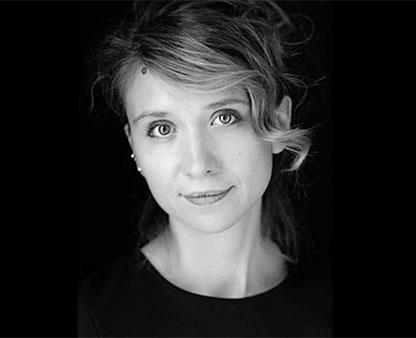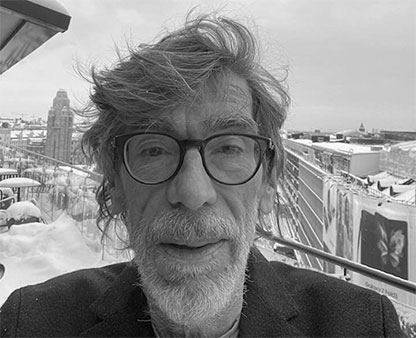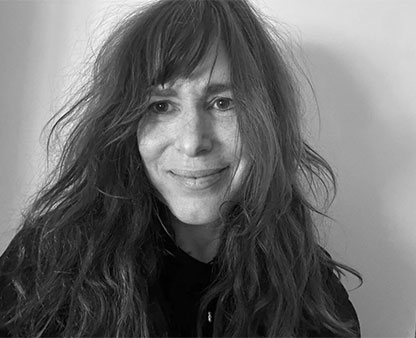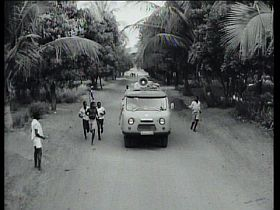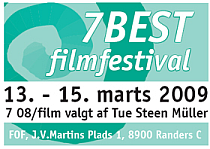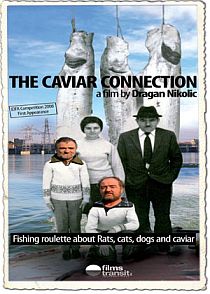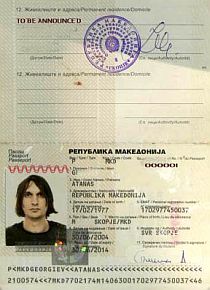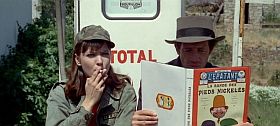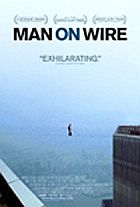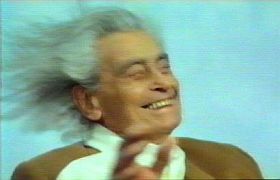Det med Godard var så begyndt igen.. Og heldigvis er der sidste år kommet en grundig bog, en biografi, som skildrer mandens liv ved at beskrive hans film, en efter en, omfattende, altvidende og velordnet: “Everything is Cinema, The Working Life of Jean-Luc Godard” skrevet af en medarbejder ved “The New Yorker”, Richard Brody. De følgende få citater er hentet fra den bog. Vi brugte dem i aftes i min FOF filmklub. Vi talte om “Pierrot le Fou” – talte om filmen som personligt dokument, så i dens rigdom af lag rækker af yderligere læsninger. Et mesterværk, enestående i ordets forstand var det, vi havde hentet ud af den store dvd-udgivelse.
SLUTNING OG BEGYNDELSE. “Godards næste film (efter ‘En gift kvinde’) ‘Pierrot le Fou’ bragte hans tilbedelse af klassisk filmform og metode til en imponerende slutning og påbegyndte en række værker mærket af en hysterisk, selvpinerisk desperation. I film efter film skulle Godards frustrerede kærlighed og filmiske søgen udspille sig som selvødelæggende fantasier og pirrelige voldseksplosioner. Med afslutningen på ægteskabet med Anna Karina kom afslutningen på hans søgen efter en form til at indarbejde det og forstærke det i værket. Han nye formløse måde at lave film på spejlede en afsindig sindstilstand, som ikke levnede nogen illusion om balance, færdiggjorthed eller ynde…”
Det med Godard var så begyndt igen.. Og heldigvis er der sidste år kommet en grundig bog, en biografi, som skildrer mandens liv ved at beskrive hans film, en efter en, omfattende, altvidende og velordnet: “Everything is Cinema, The Working Life of Jean-Luc Godard” skrevet af en medarbejder ved “The New Yorker”, Richard Brody. De følgende få citater er hentet fra den bog. Vi brugte dem i aftes i min FOF filmklub. Vi talte om “Pierrot le Fou” – talte om filmen som personligt dokument, så i dens rigdom af lag rækker af yderligere læsninger. Et mesterværk, enestående i ordets forstand var det, vi havde hentet ud af den store dvd-udgivelse.
SLUTNING OG BEGYNDELSE. “Godards næste film (efter ‘En gift kvinde’) ‘Pierrot le Fou’ bragte hans tilbedelse af klassisk filmform og metode til en imponerende slutning og påbegyndte en række værker mærket af en hysterisk, selvpinerisk desperation. I film efter film skulle Godards frustrerede kærlighed og filmiske søgen udspille sig som selvødelæggende fantasier og pirrelige voldseksplosioner. Med afslutningen på ægteskabet med Anna Karina kom afslutningen på hans søgen efter en form til at indarbejde det og forstærke det i værket. Han nye formløse måde at lave film på spejlede en afsindig sindstilstand, som ikke levnede nogen illusion om balance, færdiggjorthed eller ynde…”
KOMPLET PANIKSLAGEN. “Som han (Godard) senere erindrede det: ‘Da jeg skulle i gang med ‘Pierrot le Fou’, var jeg blot en uge før komplet panikslagen. Jeg vidste ikke, hvad jeg skulle gøre. På grundlag af bogen havde vi allerede etableret alle locations, vi havde ansat folk… og jeg spekulerede på, hvad vi skulle stille op med det alt sammen.’ “
DERFOR VÆLGER JEG ALTID ANNA KARINA. “Mest afgørende var, at hovedrollen blev spillet af en kvinde, som Godard elskede og havde mistet. Hans sårede sindstilstand var synlig for kollegerne. Hans skilsmisse fra Anna Karina og hendes forhold til Ronet (skuespiller og instruktør, den nye kæreste) efterlod Godard kæmpende alene, skønt han stadigvæk var bundet til Karina med såvel følelsesmæssige som kunstneriske bånd. Karina havde en karriere uafhængig af Godard, men ikke en stor, og skønt Godard havde bevist, at han kunne lave film af betydning uden Karina, havde han ikke lyst til at gøre det. Da han før optagelserne af en journalist blev spurgt om sit valg af kvindelige skuespillere, svarede Godard på en måde, som blotlagde de komplicerede og konfliktende følelser – ømhed, jalousi, selvmedlidenhed – som han herefter skulle komme til at lægge ind i filmen: ‘Jeg må elske de personer, jeg filmer, det er derfor, jeg altid vælger Anna Karina.’ “
OG FORDI DEN KVINDE FORLOD HAM. “Folks privatliv er ellers ikke noget, jeg tager mig af. Men ‘Pierrot le Fou” skriger mig ind i ansigtet, at en retsindig ung mand, som jeg kender, som har betydet en masse for mig, som med en venlighed som en aftenkyst har gemt sit liv bag stor tavshed, en ung mand… ved navn Jean-Luc Godard, døde, jeg ved ikke hvilken dag sidste år, fordi han elskede en kvinde vildt, og fordi denne kvinde forlod ham…” (Michel Cournot fra “Le Nouvel Observateur” i sin konkluderende artikel fra festivalen i Venezia 1965, hvor filmen fik kritikerprisen)
MINDST TOLV GANGE. “Jeg var i gymnasiet, jeg var 17 år gammel. Jeg gik ind for at se ‘Pierrot le Fou’ mindst tolv gange, da den kom frem. Jeg kunne den udenad, jeg har reciteret den for mine børn… ‘Pierrot le Fou’ har lært mig at elske… det var Anna Karina og Jean-Paul Belmondo i Porquerolles… jeg elskede kvinder endnu mere på grund af de film, Godard lavede. Han fandt det ranke og værdige frem under alt det fjollede…” (Bernard-Henri Lévy)
Pierrot le Fou, Frankrig, 1965, 105 min.Med Jean-Paul Belmondo og Anna Karina. Kamera: Raoul Coutard. I The Jean-Luc Godard Collectio, bokssæt med ni Godard film fra 1959 til 1985, Optimum Releasing, 2007. Franske versioner med engelske undertekster. Litt.: Christoffer Boe: The Jean-Luc Godard Collection i Ekko, #38, 2007. Richard Brody: Everything is Cinema, The Working Life of Jean-Luc Godard , New York, 2008, 702 sider.
